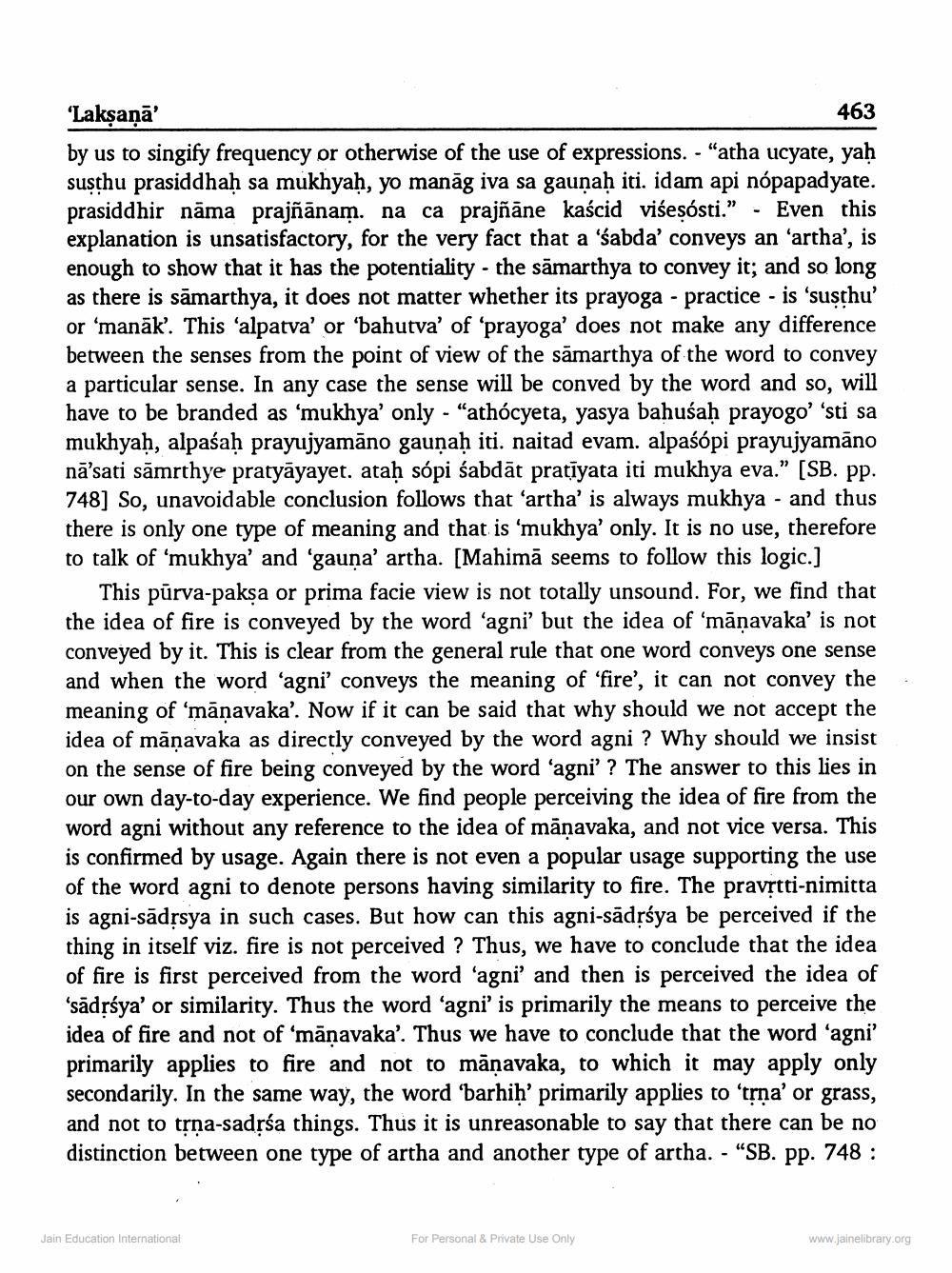________________
“Lakşaņā'
463 by us to singify frequency or otherwise of the use of expressions. - “atha ucyate, yaḥ susthu prasiddhaḥ sa mukhyah, yo manāg iva sa gaunaḥ iti. idam api nópapadyate. prasiddhir nāma prajñānam. na ca prajñāne kaścid višesósti." - Even this explanation is unsatisfactory, for the very fact that a 'sabda' conveys an 'artha', is enough to show that it has the potentiality - the samarthya to convey it; and so long as there is sāmarthya, it does not matter whether its prayoga - practice - is 'suşthu' or 'manāk'. This alpatva' or 'bahutva' of 'prayoga' does not make any difference between the senses from the point of view of the sāmarthya of the word to convey a particular sense. In any case the sense will be conved by the word and so, will have to be branded as 'mukhya' only - "athocyeta, yasya bahuśaḥ prayogo''sti sa mukhyaḥ, alpaśaḥ prayujyamāno gauņaḥ iti. naitad evam. alpaśópi prayujyamāno
sāmrthye pratyāyayet. atah sópi sabdāt pratiyata iti mukhya eva.” [SB. pp. 748] So, unavoidable conclusion follows that ‘artha' is always mukhy there is only one type of meaning and that is 'mukhya' only. It is no use, therefore to talk of 'mukhya' and 'gauna' artha. [Mahimā seems to follow this logic.]
This pūrva-paksa or prima facie view is not totally unsound. For, we find that the idea of fire is conveyed by the word 'agni' but the idea of 'mānavaka' is not conveyed by it. This is clear from the general rule that one word conveys one sense and when the word ‘agni' conveys the meaning of 'fire', it can not convey the meaning of 'māņavaka'. Now if it can be said that why should we not accept the idea of mānavaka as directly conveyed by the word agni ? Why should we insist on the sense of fire being conveyed by the word 'agni'? The answer to this lies in our own day-to-day experience. We find people perceiving the idea of fire from the word agni without any reference to the idea of māņavaka, and not vice versa. This is confirmed by usage. Again there is not even a popular usage supporting the use of the word agni to denote persons having similarity to fire. The pravrtti-nimitta is agni-sādrsya in such cases. But how can this agni-sādrśya be perceived if the thing in itself viz. fire is not perceived ? Thus, we have to conclude that the idea of fire is first perceived from the word 'agni' and then is perceived the idea of 'sādrśya' or similarity. Thus the word 'agni' is primarily the means to perceive the idea of fire and not of 'mānavaka'. Thus we have to conclude that the word 'agni' primarily applies to fire and not to mānavaka, to which it may apply only secondarily. In the same way, the word 'barhih' primarily applies to 'trna' or grass, and not to tộna-sadrśa things. Thus it is unreasonable to say that there can be no distinction between one type of artha and another type of artha. - "SB. pp. 748 :
Jain Education International
For Personal & Private Use Only
www.jainelibrary.org




